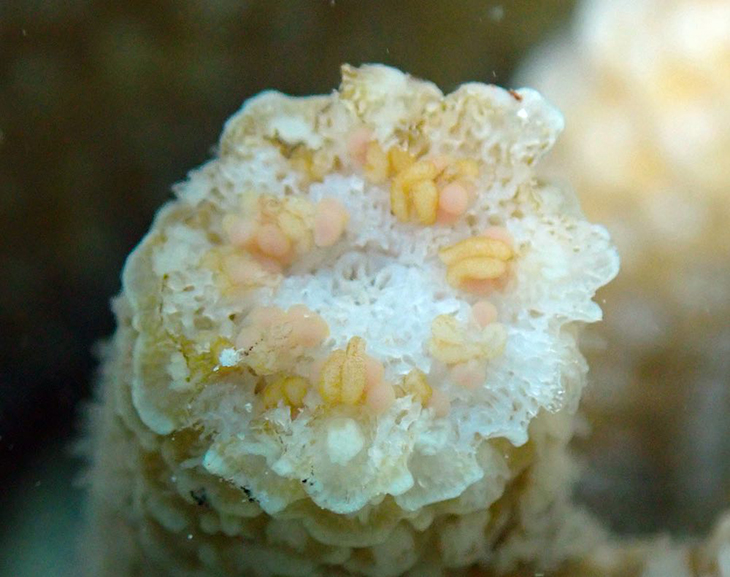
In a bid to further populate the Great Barrier Reef, the first coral IVF babies have been born, helping reproduce the next generation. This is the first time for the Great Barrier Reef to establish a breeding population on the reef using in vitro fertilization.
The first Coral IVF trial on the reef was done in 2016, and since then, the researchers have found that 22 large coral colonies were born and have grown to maturity. They ‘were filled with eggs and sperm ready to spawn after the recent full moon mass coral spawning event.’
As reported by Great Barrier Reef Foundation Managing Director, Anna Marsden, “We couldn’t be more excited to see that these coral babies have grown from microscopic larvae to the size of dinner plates, having not only survived a bleaching event but are now reproducing themselves – helping to produce larvae that can restore a degraded reef.”
The larvae was planted five years ago, and since then the coral babies have gone from microscopic sized larvae to the size of a large dinner plate. Although there are numerous dozens of other small colonies that have not yet grown to a big enough size to reproduce, but should be the right size in the following year.

For the Great Barrier Reef Foundation, after they discovered the capacity of this groundbreaking technique, they decided to get their partners and the public together in 2016 in an event near Heron Island “to give nature a helping hand.”
Southern Cross University Distinguished Professor Peter Harrison, who is also the lead researcher, shared, “Coral IVF is the first project of its kind to re-establish coral on damaged reefs by collecting millions of coral eggs and sperm during the spawning season, growing them into baby corals and releasing them directly onto degraded areas of the Reef.”
He added, “This is a thrilling result to see these colonies we settled during the first small-scale pilot study grow over five years and become sexually reproductive. The ultimate aim of this process is to produce new breeding populations of corals in areas of the Reef that no longer have enough live corals present due to being damaged by the effects of climate change.”
Prof. Harrison also said, “The larvae generated from these spawning corals have dispersed within the Heron Island lagoon and may settle on patches of reef nearby, helping to further restore other reef patches that have been impacted by climate change.”
He concluded, “This has given me and the rest of the team renewed enthusiasm as we research additional techniques on Lizard Island, through the Reef Restoration and Adaptation Program in collaboration with CSIRO, QUT and with support from Australian Institute of Marine Science, that will enable us to scale up and optimize this technique.”
The Reef Restoration and Adaptation Program happens to be the world’s largest and most ambitious effort ‘to develop, test and deploy at-scale protection, restoration and adaptations interventions’ to make sure that the Great Barrier Reef and other coral reefs all over the planet will be able to resist, adapt, and hopefully recover from the adverse impacts of climate change.
Great Barrier Reef’s Marsden, “Saving the Reef is a huge task. But having proof that this innovative, cutting-edge science works gives us hope.”
What are your thoughts? Please comment below and share this news!
True Activist / Report a typo


